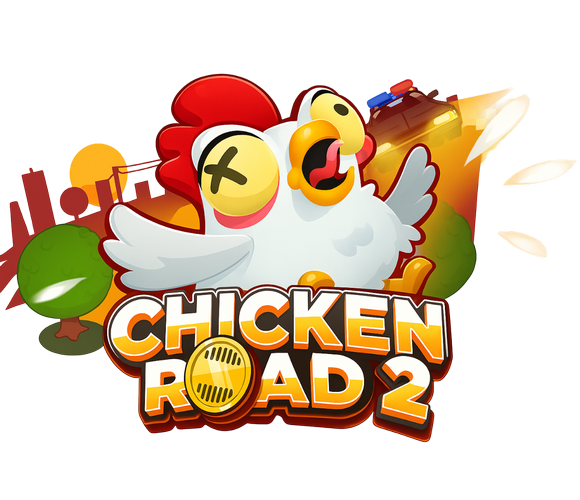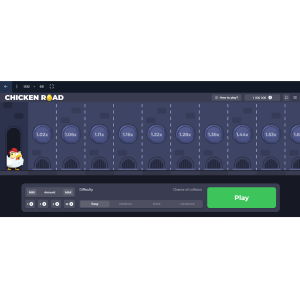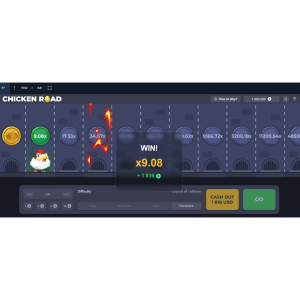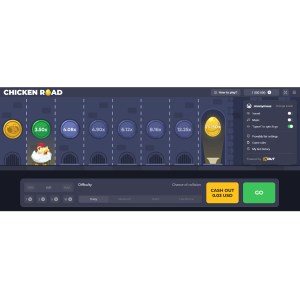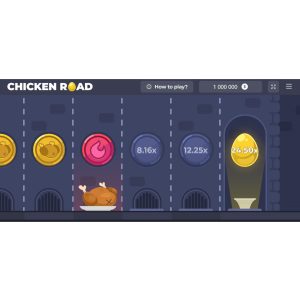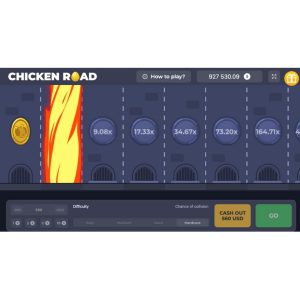🐔 Chicken Road 2 — My Honest Deep-Dive Review and Strategy Guide
I’ve been into online crash-style games for a few years now, and I’ve seen plenty come and go. Some are flashy but hollow; others hide surprisingly deep mechanics behind simple looks. Chicken Road 2 by InOut Games lands somewhere right in the middle — a deceptively cute concept that’s actually a nerve-shaking test of timing, self-control, and greed management.
I’ve spent enough hours (and, let’s be honest, enough euros) with this game to understand how it works, where it tricks your brain, and how you can walk away ahead more often than not. So here’s my complete, no-nonsense review and guide — written from the player’s chair, not the casino’s.

What Chicken Road 2 Really Is
Imagine a chicken trying to cross a road full of traps, cars, and random disasters. Every safe step means you survive — and every step increases your multiplier. The longer you dare to keep going, the more money you could make. But of course, that next step could also be your last. That’s the entire tension of the game: risk versus exit.
In short: it’s a crash game, not a slot. You control when you “cash out.” If you chicken out early — you keep your small win. If you stay too long — one wrong tile, and it’s game over. The developers took the most ancient gambling mechanic — greed control — and wrapped it in a pixelated bird adventure.
The Feel of the Game
The interface is minimalist: a lane divided into segments, a funny little chicken, and a few glowing buttons. You choose your bet size, select difficulty, and hit “Start.” Then the bird begins moving one tile at a time, with the multiplier ticking upward: ×1.10, ×1.25, ×1.50… until you either cash out or get flattened by fate.
Each round lasts seconds. Each decision feels like an eternity. There’s no cinematic cutscene, no fake tension — just pure dopamine math. The cheerful “cluck” every time you survive and the silence when you die create the perfect emotional contrast.
Betting, Multipliers & Difficulty
Before starting, you choose your wager and a difficulty mode. The higher the difficulty, the faster multipliers rise — but the greater the chance of instant failure.
| Difficulty | Risk Level | Multiplier Growth | Comment |
|---|---|---|---|
| Easy | Low | Slow | Great for beginners and testing strategies. |
| Medium | Balanced | Moderate | Best balance between fun and fairness. |
| Hard | High | Fast | Exciting but punishing. |
| Hardcore | Extreme | Explosive | Massive reward potential, instant-loss risk. |
At Easy you might need ten steps to double your bet. At Hardcore you can triple it in three steps — or lose instantly. Personally, I stick with Medium: it feels fair and keeps the adrenaline without absurd volatility.

How the Game Tricks You
Chicken Road 2 isn’t hard in mechanics — it’s one button to start and one to cash out. The challenge lives entirely in your brain. Every round whispers: “What if you go one more?” That’s where it gets you.
The multipliers are tuned perfectly to feed greed. When you feel safe, that’s when disaster usually hits. The game subtly teaches discipline: knowing when enough is enough. That’s why it’s strangely educational — a tiny crash game that mirrors human decision-making under pressure.
Platforms and Performance
Built on HTML5, Chicken Road 2 runs in any browser — no app, no installation. On my laptop and phone, performance was identical: no lag, no crashes. Still, avoid low-quality mirror sites — lag in a crash game can destroy a round.
How to Actually Win More Often
There’s no guaranteed system, but after hundreds of rounds, I’ve found a pattern that keeps me afloat.
- Warm up in demo mode. Feel the tempo first, observe how multipliers rise.
- Set profit and loss limits. Example: stop at +30% profit or –20% loss.
- Cash out early. My sweet spot is between ×1.8–×2.5.
- Adjust stakes dynamically. Lower bets after 3 losses; raise slightly after 2 wins.
- Watch emotions. Greed and frustration destroy bankrolls faster than RNG.
It’s not about predicting the future — it’s about controlling yourself.
Step-by-Step Round Example
Example gameplay (Medium difficulty, €1 bet):
- Step 1 → safe ×1.1
- Step 2 → safe ×1.25
- Step 3 → safe ×1.5
- Step 4 → safe ×1.8
- Step 5 → crash 💥
If I’d cashed out at ×1.8, I’d have doubled my stake. I didn’t — and lost. The moral: trust your first instinct.

RTP and Volatility
The theoretical RTP (Return to Player) is 95.5 %. That means the casino edge is around 4.5 %. Volatility is high — expect frequent small wins and occasional brutal wipes. Small stakes (€1–2) give the best survival rate across long sessions.
My Personal Journey
At first, I laughed at the concept. A chicken crossing the road? Really? Then it hooked me. It’s the rhythm that gets you — that perfect delay between risk and reward. I learned to play short, focused sessions: fifteen minutes max. Anything longer turns to frustration.
Over time, I noticed three patterns of play:
- Lucky streaks — easy wins, doubled balance, pure confidence.
- Death spirals — endless early crashes, overconfidence punished.
- Flow sessions — balanced rhythm, steady small profits.
Recognizing which mode you’re in is everything. When losses chain, leave immediately — there’s no “catching up.”

